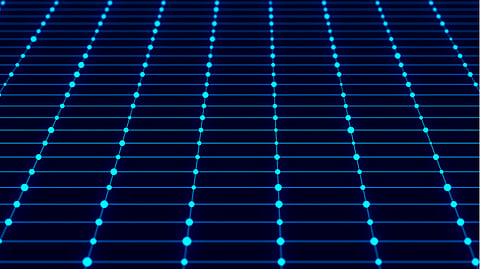IoT and Distributed Ledger Technology is Solving Digital Economy Challenges
Blockchain and IoT are two greater arrangements than the Internet
Up to this point, data governance was a theoretical-sounding concept, however, that is starting to change. Myriad data breaches and ransomware, notwithstanding information security guidelines, for example, the General Data Protection Regulation and the California Consumer Privacy Act, request new ways to deal with data governance to restore public trust.
Distributed Ledger Technology is going to change all parts of digital business and as indicated by Don Tapscott, blockchain is a greater arrangement than the Internet. Consolidate blockchain and IoT and you have two greater arrangements than the Internet who need one another for various reasons.
Blockchains have numerous advantages. They are not the answer challenges of the digital economy, however, it's sure that they will play an important part in the Internet of Things.
As the Internet of Things applications are by definition distributed, it's just ordinary that the distributed ledger technology, which blockchain is, will play a key role in how devices will communicate directly between each other (keeping a ledger and in this manner trail of gadgets as well as how they collaborate and, possibly, in which state they are and how they are handled' in the case of labeled goods).
Blockchain is planned as a basis for applications that include transactions and interactions. These can incorporate smart contracts or other smart applications that bolster explicit Internet of Things processes. This way blockchain innovation can improve compliance in the IoT as well as IoT features and cost-efficiency.
In an Internet of Things setting, DLT allies highlight the innovation's capability to do everything from driving transparency in supply chain projects, supporting self-executing payments and improving the cybersecurity of connected devices. According to disciples, DLTs help constructs trust. Then again, doubters of utilizing distributed ledger technologies for IoT see the innovation as a helpless utilization of DLTs. A 2018 World Economic Forum paper, for instance, suggested that blockchain be utilized distinctly for purely digital assets, rather than for IoT-enabled physical assets.
The combination of the Industrial Internet Consortium, which advances best practices for trusted networking, with the Trusted IoT Alliance flagged another part for DLTs. IIC effectively centered around the idea of reliability in an industrial IoT context in a white paper. "Trustworthiness, as based on top of distributed ledger, will get a tremendous lift in the following month or two," Soley said. "It's already happening."
IBM Blockchain, for example, as of now permits to expand (private) blockchain into the cognitive Internet of Things. Truth be told, eventually, it will be the blend of artificial intelligence, IoT and blockchain that will demonstrate most interest across enterprises and in myriad possible IoT applications. With blockchain, we are essentially adding to the changing digital infrastructure that powers countless developments and affects endless regions, from analytics to security, in an environment that thus far was centralized.
DLTs can play an important function in driving data provenance yet ought to be utilized in conjunction with technologies, for example, hardware root of trust and immutable storage. Distributed ledger technology just keeps up a record of the transactions themselves, so if you have poor or fake information, it will simply disclose to you where that terrible information has been. All in all, DLTs alone don't address software engineering's trash in, trash out issue, yet offer impressive advantages when utilized in concert with technologies that ensure data integrity.
Blockchain innovation vows to be the missing connection empowering peer-to-peer contractual behavior with no third party to "certify" the IoT transaction. It answers the challenge of scalability, single purpose of disappointment, time stamping, record, security, trust and reliability in a steady way.
Blockchain innovation could give a basic infrastructure to two devices to straightforwardly move a piece of property, for example, cash or information between each other with a secured and reliable time-stamped contractual handshake. To empower message exchanges, IoT devices will use smart contracts which at that point model the understanding between the two gatherings. This component empowers the autonomous functioning of smart devices without the requirement for centralized authority. If you stretch out this peer-to-peer transaction to human to human or human to objects/platforms, you end up with a completely distributed trustworthy digital infrastructure.
Luckily, just as IoT gadgets pass the 30 billion imprint, cutting-edge DLT platforms are showing up in the market. These platforms highlight another design that is very appropriate to the transaction dynamics expected to help IoT situations. The mix of IoT and cutting-edge DLT will totally change multi-organization transactions and business coordination, and in doing as such, change our reality.
Join our WhatsApp Channel to get the latest news, exclusives and videos on WhatsApp
_____________
Disclaimer: Analytics Insight does not provide financial advice or guidance. Also note that the cryptocurrencies mentioned/listed on the website could potentially be scams, i.e. designed to induce you to invest financial resources that may be lost forever and not be recoverable once investments are made. You are responsible for conducting your own research (DYOR) before making any investments. Read more here.
.png)

